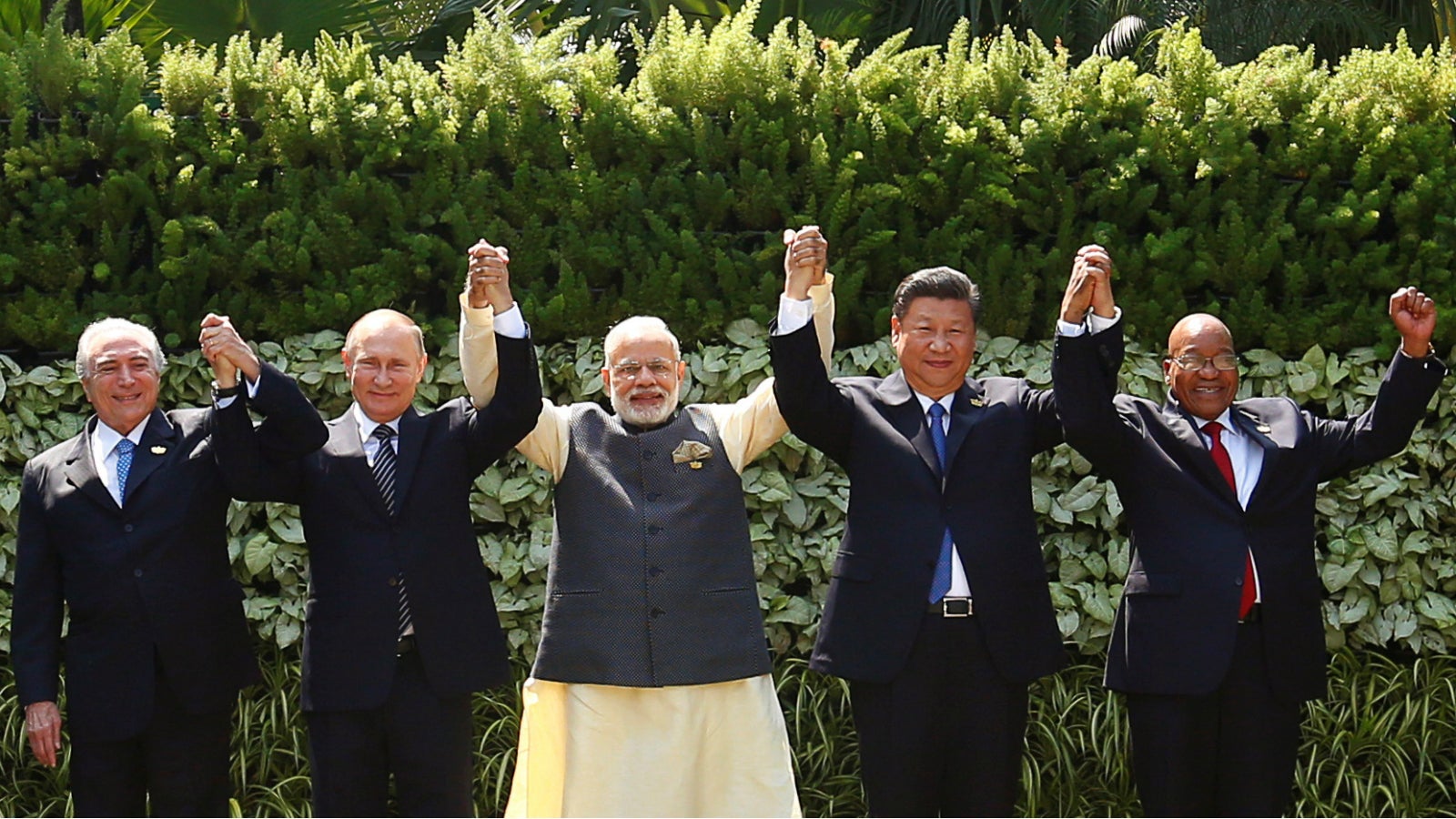The BRICS may be sputtering but its bank is keeping the dream alive
It hasn’t been the best of times for the BRICS, the five-member bloc that was once advertised as the next global economic powerhouse.


It hasn’t been the best of times for the BRICS, the five-member bloc that was once advertised as the next global economic powerhouse.
With the exception of India and China (i.e. if you trust the GDP numbers), economic growth has been tepid across the bloc. In late 2014, Goldman Sachs, the original purveyor of the acronym, even shuttered its BRICS investment fund after years of losses.
Political uncertainty, in particular, has ravaged some member countries: it took the wind out of fast-growing Brazil, and is deepening in South Africa’s already reeling economy. Russia, meanwhile, finally saw its economy grow after seven straight quarters of contraction, but damp oil prices and continuing Western economic sanctions won’t do the recovery any favours.
As the BRICS attempts to pull itself out of the hole, the only real manifestation of its collective economic might—the New Development Bank (NDB)—is trying to keep the dream alive.
Seen by some as an alternative to the Western-dominated World Bank and International Monetary Fund, the Shanghai-based NDB was launched in 2015 to provide infrastructure financing to BRICS members and other developing countries. Since then, the bank, with an initial subscribed capital of $50 billion equally distributed among the five members, has approved seven projects for a total of $1.5 billion.
Now, the NDB wants to up its game.
In 2017, it expects to fund 15 other projects with a total value of between $2.5 billion and $3 billion, NDB president KV Kamath said. The bank will also look to add new members as it prepares to widen its footprint. So far, all its seven projects are located within the BRICS.
“The board of governors approved the terms, conditions and procedures for admission of new members to the New Development Bank,” Kamath, a veteran Indian banker, said at a press conference on April 01 in New Delhi, during the NDB’s second annual meeting. “We will now work on the criterion to select and then look at countries that possibly could be a fit in terms of NDB and then discuss this with the boards.”
Kamath, who previously helmed India’s ICICI Bank, declined to provide any details of possible members, but said that they “ought to be countries that fit in with the overall set of aspirations with which the bank was set up.” “The global south will be an important constituent but we will certainly look at a wider set of countries,” he added. That sets up the tantalising possibility of, say, Pakistan applying for membership, a situation that India may not be particularly agreeable to.
Nonetheless, the membership expansion is backed by growing confidence at the NDB that the BRICS may be out of the woods.
“Our reading is that the economy in all three countries (Brazil, South Africa, and Russia) which were a bit under stress has been improving dramatically this year,” explained Kamath, who met with finance ministers of all member countries earlier in 2017. “And in all three countries, if there was a fear of inflation, that fear also has died down.”
But political uncertainty remains. On March 31, the day the NDB board meetings began in New Delhi, South African president Jacob Zuma sacked his finance minister Pravin Gordhan and reshuffled his cabinet, plunging the government into turmoil. The sputtering South African economy now faces the very real prospect of a credit rating downgrade to junk status.
That won’t be good news for the BRICS bloc—or its ambitious bank.